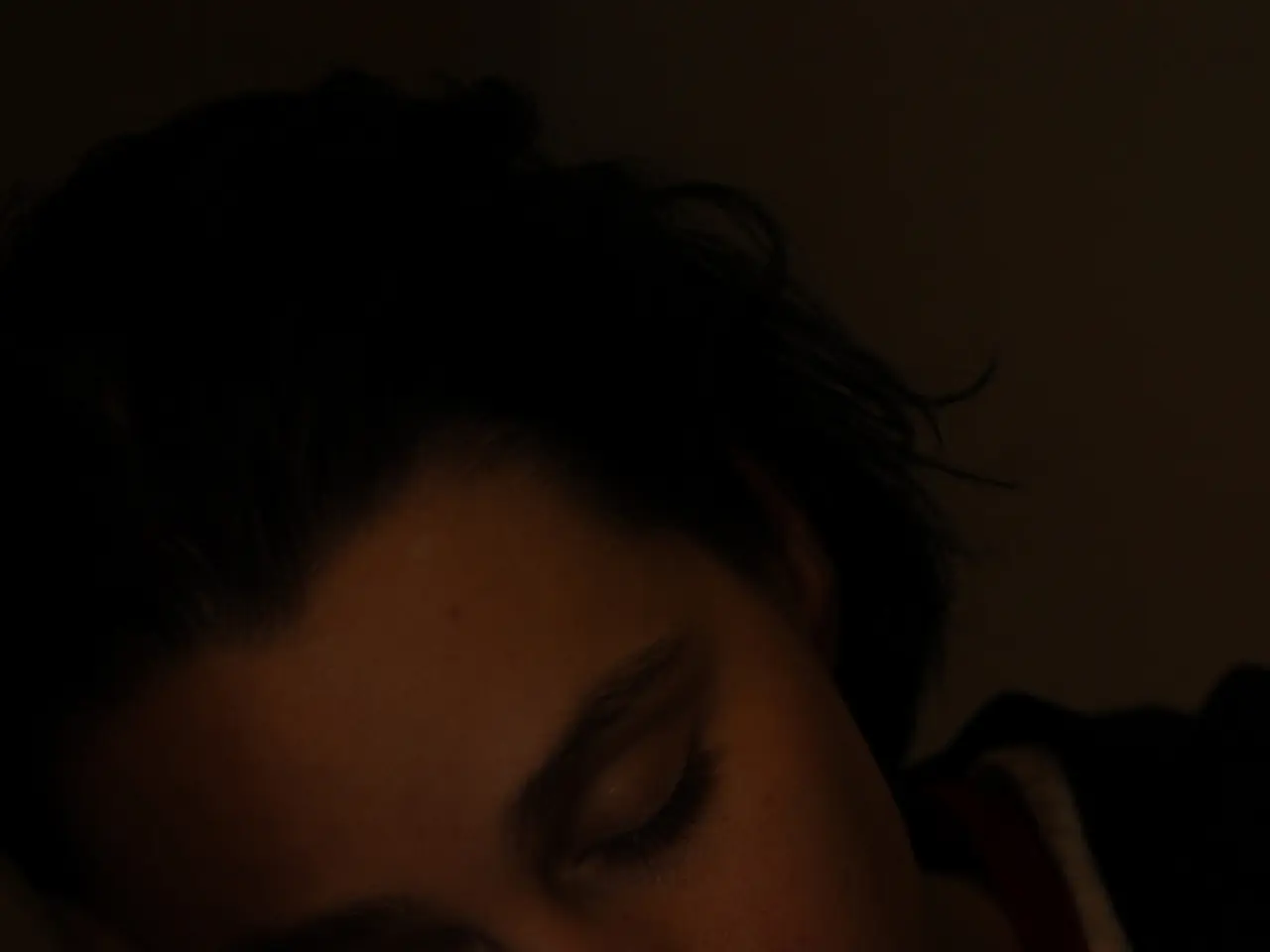Sleep disorders marked by excessive daytime drowsiness and potential signs of narcolepsy
Excessive Daytime Sleepiness (EDS), also known as hypersomnia, is a common condition that affects a significant portion of the population. This condition, often the most obvious symptom of narcolepsy, can significantly impact a person's quality of life.
EDS is a result of chronic sleep disorders such as sleep apnea, restless legs syndrome (RLS), depression, insomnia, narcolepsy, and sleep deprivation. If a person's EDS has behavioral causes, their doctor may recommend lifestyle changes. These may include going to bed at the same time each night, ensuring a quiet and dark bedroom, avoiding caffeine and alcohol before bed, and exercising regularly.
Treatments for EDS associated with narcolepsy typically combine behavioral approaches and medications to reduce sleepiness and improve alertness.
Behavioral treatments include scheduled naps, maintaining a consistent sleep schedule, avoiding substances like alcohol, caffeine, and tobacco, and regular exercise timed several hours before bedtime. These interventions can promote better nocturnal sleep and daytime alertness.
Medications commonly used to treat EDS in narcolepsy include modafinil and armodafinil, pitolisant, sodium oxybate, and antidepressants. Modafinil and Armodafinil are often the first-line wakefulness-promoting agents, improving alertness by stimulating the central nervous system. Pitolisant, a newer drug, acts on histamine receptors to enhance wakefulness and cognitive function. Sodium oxybate is typically used at night to improve nighttime sleep and reduce daytime sleepiness.
Other stimulants or amphetamines may also be used, but newer agents like pitolisant and solriamfetol have improved safety and efficacy profiles. Overall, treatment for narcolepsy-related EDS is often multimodal, tailored to the individual's response, and may require adjustments over time to optimize effects and minimize side effects.
Healthcare professionals may use a polysomnogram (PSG) to diagnose the cause of a person's EDS. During a PSG, a person's brain waves, eye and leg movements, heart rate, breathing, and blood oxygen levels are measured. If healthcare professionals suspect narcolepsy, they may follow up with a multiple sleep latency test (MSLT) to measure a person's sleepiness during waking hours.
Narcolepsy is a chronic neurological condition that causes fragmented sleep and the quick onset of rapid eye movement (REM) sleep. If a person is regularly experiencing symptoms of EDS, they should contact a healthcare professional, who may refer them to a sleep specialist if necessary.
This comprehensive approach helps reduce excessive daytime sleepiness, improve quality of life, and prevent accidents related to sudden sleep attacks. By combining behavioral interventions and pharmacologic therapies, individuals with narcolepsy can manage their condition effectively and live a more normal, productive life.
[1] National Institute of Neurological Disorders and Stroke. (2021). Narcolepsy Fact Sheet. Retrieved from https://www.ninds.nih.gov/Disorders/Patient-Caregiver-Education/Fact-Sheets/Narcolepsy-Fact-Sheet [2] Mayo Clinic. (2021). Narcolepsy. Retrieved from https://www.mayoclinic.org/diseases-conditions/narcolepsy/symptoms-causes/syc-20355266 [3] American Academy of Sleep Medicine. (2021). Narcolepsy. Retrieved from https://aasm.org/conditions/narcolepsy/ [4] Food and Drug Administration. (2020). Modafinil: Medication Guide. Retrieved from https://www.accessdata.fda.gov/drugsatfda_docs/label/2020/202374s040lbl.pdf [5] National Sleep Foundation. (2021). Narcolepsy. Retrieved from https://www.sleepfoundation.org/narcolepsy
- The chronic neurological condition, narcolepsy, is often associated with impotence due to its impact on a person's mental and physical health.
- Erectile dysfunction can be a symptom of several chronic diseases, including narcolepsy, and seeking medical attention can help manage the condition.
- In the treatment of narcolepsy-related excessive daytime sleepiness (EDS), science has developed a range of medications such as modafinil, armodafinill, pitolisant, sodium oxybate, and antidepressants to improve alertness and reduce sleepiness.
- Besides the use of medications, treating EDS associated with narcolepsy can involve addressing mental health conditions like depression, which is another component of health and wellness.
- Proper diagnosis of narcolepsy, and therefore EDS, involves a series of medical tests such as polysomnograms (PSG) and multiple sleep latency tests (MSLT), to ensure an accurate diagnosis and appropriate treatment of the condition.




